How to Jam the Minor Blues
The chord progression of the minor Blues is similar to the one of the dominant Blues we have already seen, but with one important difference: now we are in a minor key, so all these chords are minor.
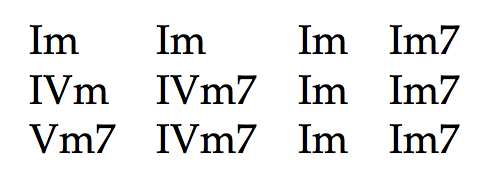
In the following we will do everything in the key of Am, but the same patterns and licks will apply in all keys. In the key of Am (where the I chord is Am, the IV chord is Dm and the V chord is Em) the chord progression becomes:
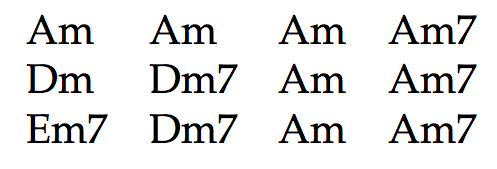
Here is one possible way to play this chord progression (You can hear an audio file of this tab by clicking HERE):

The Blues Scale and the Target Notes
The beautiful thing in playing the Blues is its simplicity. You can use on the minor Blues the same pentatonic scale you use on a dominant Blues! Of course, since the chords behind are different, the scale will sound different too. Here is the Blues scale: a minor pentatonic scale with an added b5. Here is a diagram of the scale with the b5 marked in red.
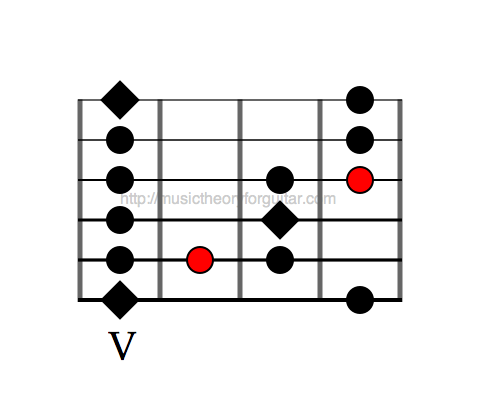
The key to make the Blues scale sound good is to learn the “target notes” for each chord. The target notes are the notes contained in the chord you are playing. These are the notes that sound better on the chord, and the ones that you should finish your phrases on when playing. The other notes are not bad or forbidden by any means, only they sound less “in” the chord if you hold them for too long.
On Am7 (the Im7 chord) the target notes are A, C, E and G. They are shown in green here (as you can see, the target notes are all the notes in the minor pentatonic but for the D note):
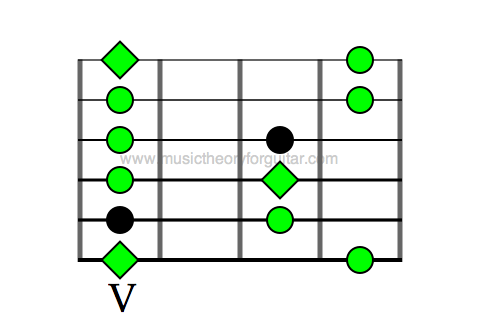
On Dm7 (the IVm7) the target notes are D, F (not in the scale, but usable!), A, and C, all shown in green here:
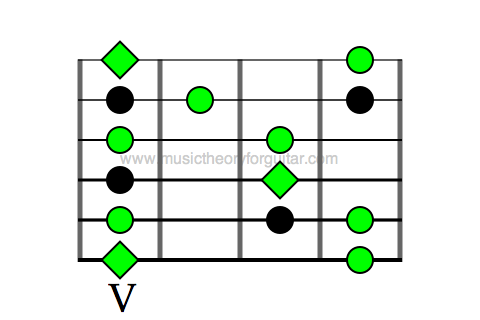
Finally, in Em7 (the Vm7 chord), the target notes are E, G, B (not in the scale but usable!), and D.
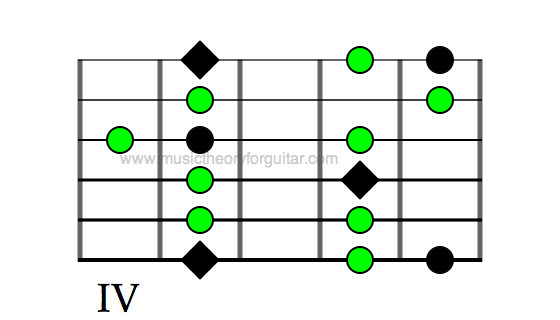
As you can see, some notes of the chord are not in the scale. Experiment with them, just be warned that if you play one of these notes on the wrong chord it will sound downright bad. For instance, the F note works on the Dm chord but won’t work on the Am or Em chords. If you don’t know on what chord you are, just use the pentatonic scale (that contains only “safe” notes). On the other hand, one of the “extra” notes played at the right moment on the right chord will make you sound way better than just the pentatonic alone.
Put Some Emotion Into It
Just a couple of guidelines to make your solo sound better:
- Don’t overplay! Just few notes are fine. Some of the best Blues solos are made of just a handful of notes played at the right moment.
- Feel the groove. Make sure you are playing in time with the other instruments (it does not matter if it’s just a backing track or if you have a live band backing you). While the note choice is important, rhythm may be even more important here.
- Phrasing. A judicious application of slides, bends, vibrato, and other phrasing elements is key to playing a tasty and emotional solo. Trade speed with single-note expression and your solo will sound more in-style.
Of course, there are more possible scales that you can play over a minor Blues. And there is more to Blues than just the minor Blues! If you want to know more and become a great Blues player, click on the button below to learn more about Blues guitar scales and how to apply them to real music!
